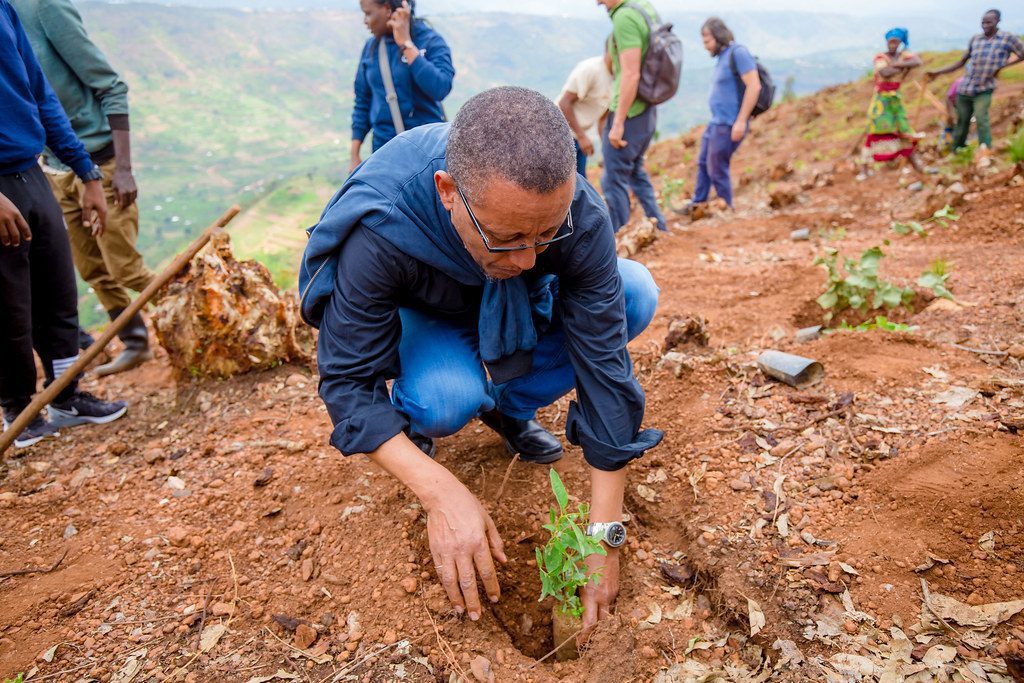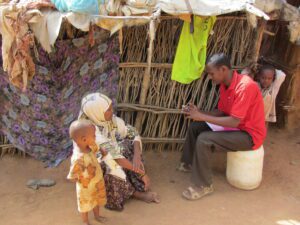Climate change is the silent storm that’s reshaping our world. It’s in the rise of the seas, the scorching of our lands, and the whisper of winds growing ever more violent. As we stand at this precipice, the need for action has never been more urgent. But how do we measure progress when the stakes are so high? Enter project monitoring and evaluation tools, the compass guiding us through the fog of uncertainty. These tools allow us to track the invisible, to measure the immeasurable, and to ensure that our efforts in climate change mitigation are not in vain.
What is Climate Change Mitigation?
At the heart of this global struggle is mitigation — the process of reducing the causes of climate change. It’s the shift to renewable energy, the reduction of greenhouse gases, and the deep commitment to protecting the Earth for future generations. But lofty goals aren’t enough. Project monitoring and evaluation tools bring these goals into the realm of reality, transforming abstract ideas into measurable outcomes. Without these tools, we are like sailors navigating the vast ocean without a map, hoping for the best but prepared for the worst.
The Vital Role of Monitoring and Evaluation Tools in Climate Mitigation
Imagine embarking on a journey without a means to track your progress. You could walk miles in the wrong direction without realizing it. In the fight against climate change, project monitoring and evaluation tools are the lifeline, the watchful eye ensuring we’re moving toward our goals. These tools offer insight into every stage of climate action, from the smallest policy change to the vast adoption of renewable energy. Without them, our efforts risk becoming disjointed, ineffective, and ultimately, lost.
Key Indicators for Measuring Climate Change Mitigation Progress
The journey to saving our planet begins with understanding where we stand. Project monitoring and evaluation tools offer us the metrics, the indicators that illuminate the path ahead. Let’s break down some key areas:
Greenhouse Gas (GHG) Emission Reductions
Every breath we take is tinged with the weight of our industrial history, but reducing greenhouse gas emissions can lighten that burden. By setting baselines and monitoring reductions, project monitoring and evaluation tools allow us to see the impact of our efforts. Each ton of CO2 removed from the atmosphere is a victory, a step toward a livable future.
Renewable Energy Adoption
The sun and wind offer salvation, but how do we measure their embrace? Project monitoring and evaluation tools track the growth in renewable energy capacity, ensuring that the tides are turning in our favor. Metrics like installed capacity and renewable energy market share tell the story of our transition from fossil fuels to a greener world.
Energy Efficiency Improvements
Efficiency is the quiet hero in this narrative, reducing the amount of energy we waste and amplifying our impact. Project monitoring and evaluation tools measure these gains, tracking improvements in industries, homes, and transportation. They tell us where we’re succeeding and where more work is needed.
Data Collection: The Heartbeat of Climate Change Mitigation
Data is the pulse of climate action. Without it, we’re operating in the dark, unaware of our progress or setbacks. The beauty of project monitoring and evaluation tools lies in their ability to gather data from a multitude of sources. Satellites capture the world’s changing landscapes, sensors detect shifts in greenhouse gas concentrations, and surveys on the ground provide context. But like all things precious, data can be elusive, particularly in regions where resources for tracking are scarce. The challenge lies in gathering reliable, consistent data — a challenge that these tools are designed to meet head-on.
Choosing the Right Metrics for Climate Mitigation
The beauty of project monitoring and evaluation tools is their flexibility. They are not one-size-fits-all. The choice of metrics depends on what we need to measure: are we tracking emissions reductions, renewable energy installations, or policy effectiveness? Whether we’re looking at raw numbers or qualitative impacts, the right tools ensure that nothing slips through the cracks.
Case Studies of Successful Climate Mitigation Monitoring
Let’s look at some inspiring examples of how project monitoring and evaluation tools are shaping real-world outcomes.
Case Study 1: European Union’s Climate Action Progress
The European Union has led the charge in climate mitigation, using comprehensive monitoring systems to track its ambitious goals. By leveraging project monitoring and evaluation tools, the EU tracks greenhouse gas reductions and monitors renewable energy growth. Each metric tells the tale of a continent moving toward a sustainable future.
Case Study 2: Costa Rica’s Carbon Neutrality
Costa Rica stands as a beacon of hope in the climate struggle. With a commitment to carbon neutrality, the nation uses sophisticated project monitoring and evaluation tools to track emissions, monitor land use, and promote renewable energy like hydropower. The data they gather not only tracks their progress but inspires others.
Case Study 3: U.S. State-Level Renewable Energy Initiatives
Across the U.S., individual states have taken bold steps in tracking renewable energy adoption. California, for example, uses project monitoring and evaluation tools to measure renewable installations and assess the reduction of fossil fuel dependency. These efforts offer a roadmap for other states and countries alike.
Challenges in Monitoring Climate Change Mitigation
It’s not all smooth sailing. The path to effective climate mitigation is riddled with challenges. One of the biggest obstacles is the lack of standardized frameworks for measuring progress. Every nation, every organization may use different tools and methods, leading to data that’s difficult to compare. Additionally, data gaps persist in regions where resources are limited. This is why global collaboration is crucial. When we come together, sharing insights and leveraging project monitoring and evaluation tools, we create a unified front against the existential threat of climate change.
Communicating M&E Findings Effectively
Tracking progress is only half the battle. The real power lies in communicating those findings. When results from project monitoring and evaluation tools are shared openly and effectively, they drive change. Whether it’s through reports to international bodies like the IPCC, or through transparent national reporting systems, the data must reach those who can act on it.
Technological Advances in Monitoring and Evaluation Tools
The future belongs to those who innovate. With advances in satellite technology, AI, and machine learning, project monitoring and evaluation tools are becoming more sophisticated, capable of tracking emissions, energy use, and even predicting future trends. These tools give us the power to foresee potential impacts and adjust our strategies accordingly.
Conclusion
In the vast and often overwhelming battle against climate change, project monitoring and evaluation tools are our lifeline. They help us chart our course, ensuring that every step we take is purposeful and effective. From reducing emissions to tracking the adoption of renewable energy, these tools are the foundation of meaningful climate action. Without them, we risk losing our way, but with them, we can measure progress, adapt strategies, and ultimately, safeguard our planet for future generations.
FAQs
- What is the difference between project monitoring and evaluation tools and traditional monitoring systems? Traditional monitoring systems may track progress, but project monitoring and evaluation tools offer a more holistic, flexible approach, allowing for detailed tracking of both quantitative and qualitative impacts.
- How can developing countries implement project monitoring and evaluation tools for climate mitigation? Developing countries can partner with international organizations to access these tools, ensuring that they have the resources and technology needed to track progress effectively. Learn more about services like this that provide support in such regions.
- What are the main benefits of using project monitoring and evaluation tools in climate action? These tools offer transparency, accountability, and the ability to track detailed progress in emissions reductions, renewable energy adoption, and adaptation efforts.
- What role do external bodies like the UNFCCC play in climate monitoring? External bodies provide the frameworks and guidelines needed to ensure that monitoring efforts are standardized and comparable across countries. They also encourage transparency and the sharing of data.
- How can individuals make use of project monitoring and evaluation tools? Individuals can get involved by advocating for stronger climate policies that incorporate these tools, supporting transparency in government reporting, and reducing their own carbon footprint. For more information, you can explore global data repositories like the Global Carbon Atlas.
In this intertwined dance of data and action, project monitoring and evaluation tools are the heartbeat, the pulse that keeps us moving forward. Every step we track is one step closer to saving our world.






